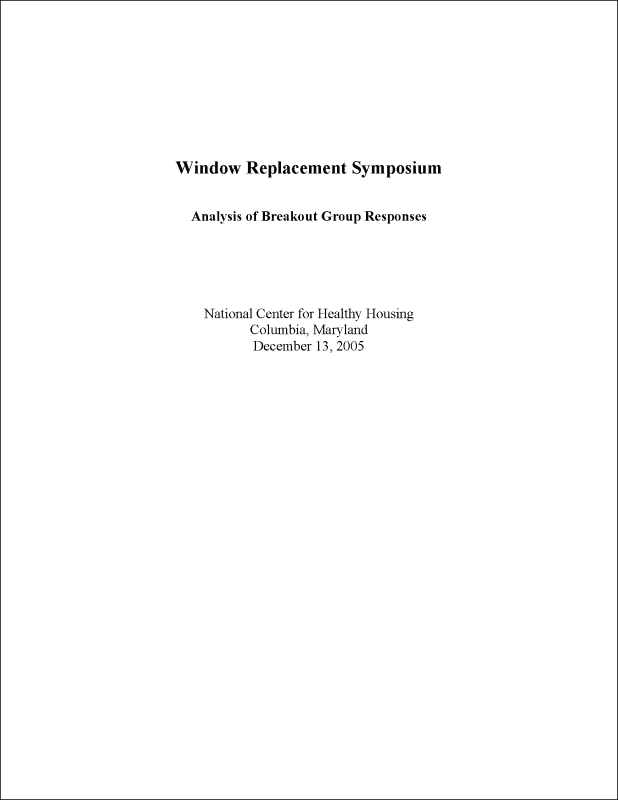Window Replacement Symposium
Project Funders: U.S. Centers for Disease Control and Prevention (CDC) and the U.S. Department of Housing and Urban Development Office of Healthy Homes and Lead Hazard Control (HUD-OHHLHC)
Project Contact: Jonathan Wilson, jwilson@nchh.org, 443.539.4162
Project Description: On November 7, 2003, the Lead Poisoning Prevention Branch of the U.S. Centers for Disease Control and Prevention (CDC) and the Office of Healthy Homes and Lead Hazard Control (OHHLHC) of the U.S. Department of Housing and Urban Development (HUD), hosted a one-day symposium on window replacement in Atlanta, Georgia. The symposium brought together health, housing, and energy professionals to examine the benefits of window replacement and offer possible strategies that could be used to expand its use. The report highlights and analyzes selected recommendations from the meeting. Findings included the following points:
-
There is a need for additional research to understand differences in cost, energy efficiency, and durability of different window replacement frames and other window replacement materials.
- Best practices for window installation need to be defined that consider energy efficiency, cost, and health-related issues.
- Decision guides for window replacement need to include the health considerations of lead hazard reduction, moisture, and allergens.
- In some cases, repair of existing windows or replacement of parts of windows can be an effective way to increase energy efficiency and reduce waste generated from replacing large numbers of windows.
- Public subsidy may be needed to promote window replacement in homes, particularly in low-income communities or in communities where property values are not growing.
- When windows are replaced or repaired the whole house should be considered as a system to avoid creating new problems, such as inadequate ventilation, and to address issues like historic preservation requirements early in the process.
- Additional research is needed to determine whether or not the cost and energy savings of using polyvinyl chloride (PVC) windows instead of wood or aluminum outweighs the environmental consequences.
- Including higher scoring opportunities in state LIHTC allocation plans for projects that include window replacement would motivate developers to replace windows when renovating affordable multifamily rental properties.
- Tax credits and incentives for window replacement at local and state levels would enhance the impact of the new tax credit for window replacement for homeowners included in the Energy Policy Act of 2005.
- Coordination among federal agencies and blending of funds used to remedy problems in the home could make these efforts more efficient and free funds to allow for window replacement.
- Programmatic agreements between the State Historic Preservation Office and agencies and nonprofits can streamline the review process and target window replacement by specifying certain situations where replacing windows would be exempt from review.
- Window manufacturers, retailers, and the insurance industry present potential avenues for the promotion of window replacement through the education of consumers about health and environmental gains and/or financial incentives.
